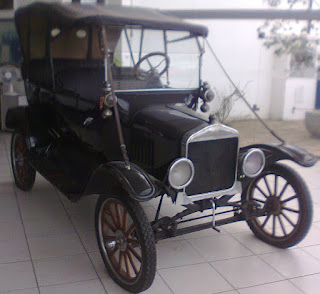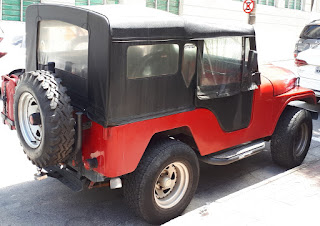1 - Jeep CJ-5: possibly the closest to an austerity comparable to the Ford Model T around '83 in Brazil and the United States, the CJ-5 had many different engine options throughout its production run which took place in many countries, and at least in Argentina it featured a 2.5L Kaiser Continental L-151 side-valve engine until '78 with option for either a 6.86:1 low compression ratio or a 7.3:1 standard. As most of the high-compression cylinder heads meant to the Model T feature a 6:1 compression ratio, and some go even further into 8:1 which could even withstand to a CNG conversion better than stock Argentinian engines, this would already be a good starting point in favor of what could be seen at first as "outdated". Sure other improvements would be desirable, maybe a stroker crankshaft and a higher-lift camshaft, and as far as off-road performance goes it's worth to remind the dual-range transfer case featured on a 4WD Jeep, which on low-range may be comparable to the Ruckstell 2-speed axle which used to be offered as an aftermarket improvement to the cross-country abilities of the Ford Model T;
2 - Ford Maverick: the Brazilian 6-cylinder versions were fitted with the Willys Hurricane engine instead of the same Thriftpower Six of their American counterparts, because Ford was definitely out of pace when it comes to engine offerings in Brazil. Even though a Model T engine would be very unlikely to become an actual improvement, neither stock or with some old-school performance upgrades developed around the earlier days of hot-rodding, it would be quite tempting to do in jest for Ford and the management of its Brazilian branch;
3 - Lada Laika: this would be definitely odd, one of the engines which became more relevant to define what the so-called American Way of Life evolved into, fitted to a Fiat derivative originated in the Soviet Union during the Cold War. Well, considering the engine of the Ford Model T's direct replacement had been made under license in the early days of the Russian motor industry still under the Soviet Union, it may not be so hard to explain why such an engine swap which could spark a diplomatic incident would be interesting as a matter of curiosity;
4 - Gurgel Carajás: this Brazilian SUV from the '80s resorted to a Volkswagen powertrain, adjusted to allow the fitment of the engine at the front with a rear transaxle. Considering the Ford Model T used to be highlighted for its off-road performance even though it also only resorted to rear-wheel drive, maybe an upgraded copy of its engine would be interesting to see fitted to a Gurgel Carajás, even though it had a milder off-road capability compared to its smaller rear-engined predecessors;
5 - Simca Vedette/Chambord: actually based on Ford designs, even featuring versions of the Flathead V8, maybe this is among the least strange options to try fitting an upgraded Model T engine. As the V8 fitted to the Simca Vedette ranged from 2.2L to 2.4L displacement, and the bigger variant being the only one fitted during the extended production run of the Simca Chambord in Brazil, an attempt to replace it would be presumably met with fewer objections than a similar attempt considering the larger variants of the Ford Flathead V8 which were featured on full-size Ford until '53 (or '54 in Australia). Definitely it would be worth to increase the compression ratio and a higher-lift camshaft if a Model T engine could be swapped into a Simca Chambord, eventually reaching power ratings closer to the 2.2L Aquillon V8, yet at a much lower RPM.












I'm enjoying the insights on your blog. Another car that might be suited for a new Model T engine would be the Volvo Amazon, originally using 1.8L or 2.0L engine. I feel the increased torque from the T engine's greater displacement would transform the car and allow higher gearing for easier highway travel.
ReplyDeleteThank you for an excellent blog.
The torque of a stock Model T engine is quite low, and so is the peak torque RPM. Yet with some improvements to the engine itself, possibly the Volvo Amazon could also benefit from it.
Delete